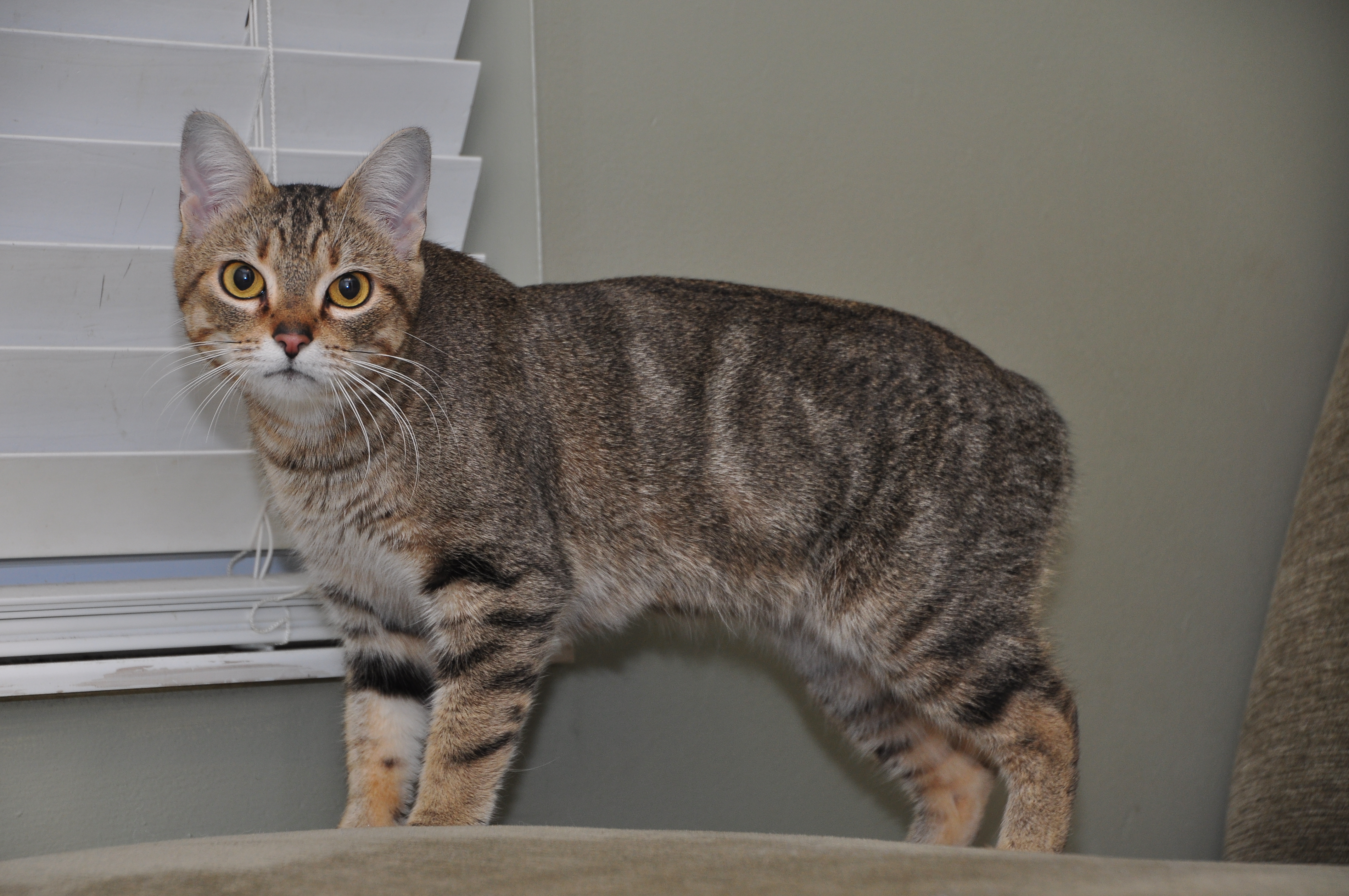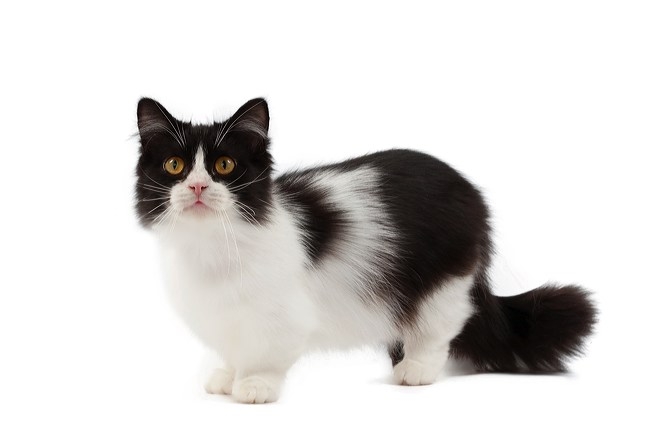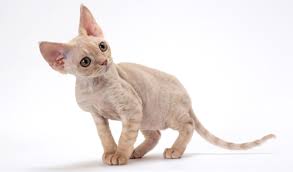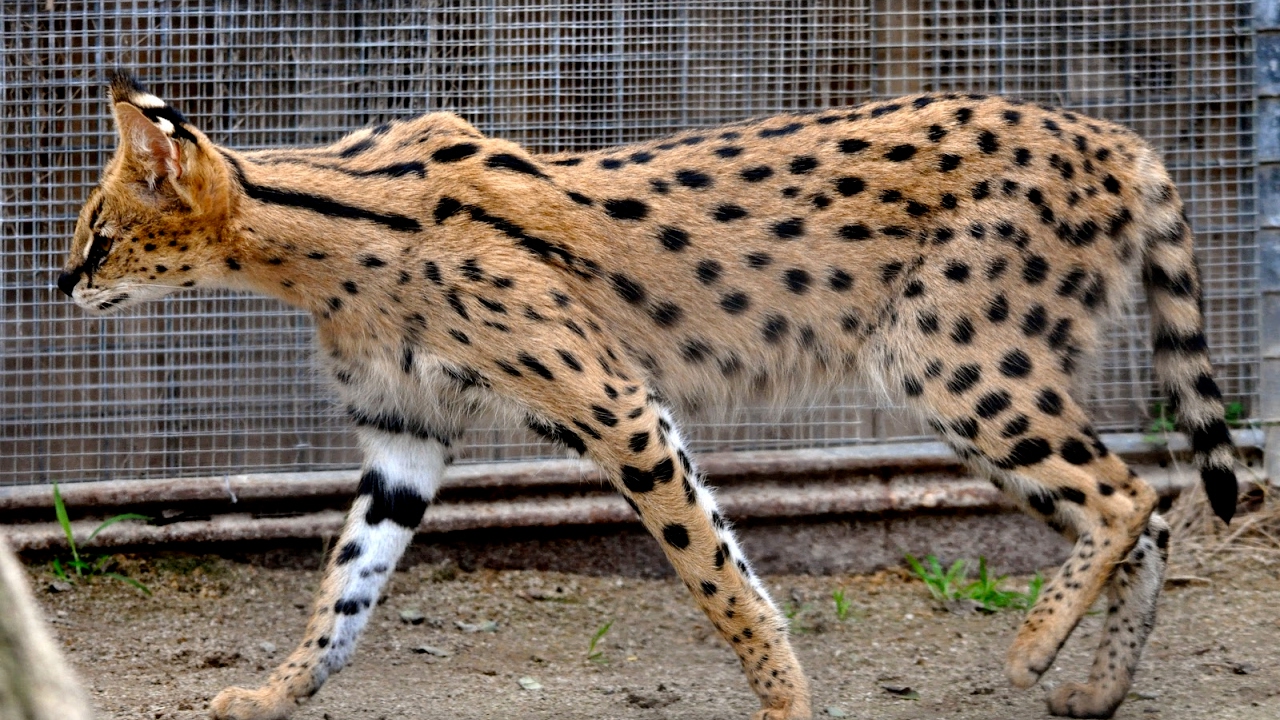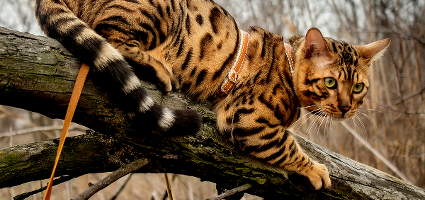Unique Breeds
So, out of all the exciting exotic breeds of cats and kittens that exist in the universe,
those on this list have been ranked as the best of the best.
These cat breeds are from all over the world
and you can tell by their looks and character that they are not exactly the cats next door...
Lykoi
Lykoi cat,The word "Lykoi" actually comes from a Greek word meaning "wolf," which is fitting, because little
Lykoi
kitties look just like baby werewolves! Their unique, wiry hair pattern and distinct features make them worth
nearly $2k per cat.
They lack hair on their underbellies, as well as around their eyes, noses, and muzzles.
Some people are terrified of these sweet little babies, because they look more like dogs than cats, but
many cat-lovers have overlooked that in favor of their spooky appearance.
Maine-Coon
Maine Coon is the largest domesticated breed of cat. It has a distinctive physical appearance and
valuable hunting skills.
It is one of the oldest natural breeds in North America, specifically native to the state of Maine, where
it is the official state cat.
Although records don't exist for the Maine Coon's exact origins and date of introduction to the United
States, there are multiple competing theories.
The breed was popular in cat shows in the late 19th century, but its existence became threatened when
long-haired breeds from overseas were introduced in the early 20th century.
The Maine Coon has since made a comeback and is now one of the most popular cat breeds in the world.
wiki link - https://en.wikipedia.org/wiki/Maine_Coon
Manx
The Manx cat, in earlier times often spelled Manks, is a breed of domestic cat originating on the Isle of
Man, with a naturally occurring mutation that shortens the tail.
Many Manx have a small stub of a tail, but Manx cats are best known as being entirely tailless; this is
the most distinguishing characteristic of the breed, along with elongated hind legs and a rounded head.
Manx cats come in all coat colours and patterns, though all-white specimens are rare, and the coat range
of the original stock was more limited.
Long-haired variants are sometimes considered a separate breed, the Cymric.
Manx are prized as skilled hunters, and thus have often been sought by farmers with rodent problems.
https://en.wikipedia.org/wiki/Manx_cat
Sphynx
The Sphynx’s most distinctive feature is its nearly hairless body and oily skin.
And though you might think a hairless cat would be hypoallergenic, it’s not true! Cat allergies are
caused by dander, and the Sphynx has plenty of that.
Peterbald
Like the Sphynx, Peterbald cats are mostly hairless. Their strangest cat breed characteristic?
Peterbalds have webbed feet, which they’ve been known to use to pick up objects and open doors!
Munchkin
This one is a newcomer to the strange cat breed scene—it’s been around for only about 20 years.
It has unusually short legs, which are the result of a natural genetic mutation.
Devon-Rex
Devon Rex cats, along with the Cornish Rex cats they resemble, have short, curly, soft hair.
They’re also known to be quite intelligent, and they can be trained to do tricks like these.
tricks - https://www.worldsbestcatlitter.com/clearing-the-air/2013/07/how-to-train-your-cat-to-do-tricks/
Savannah
Savannah, the Savannah Cat looks like a wild cat from the African Savannah—and that’s half true.
It’s the result of a cross between a domestic cat and the serval, a medium-sized wild African cat.
Savannah cats are exceptionally large, typically weighing up to 30 pounds.
Teacup-Persian
Teacup Persian, technically, the Teacup Persian isn’t a strange cat breed of its own—it’s a variety of Persian
cat that’s
been bred to be extremely small.
Some are so tiny they can fit in the palm of your hand!
Bengal
The Bengal cat is a domestic cat breed developed to look like a leopard cat.The Bengal cat is a domestic cat
breed developed to look like a leopard cat.
Bengal cats were developed by selective breeding from hybrids of the Asian leopard cat, Prionailurus
bengalensis, backcrossed to domestic cats,
with the goal of creating a beautifully spotted, healthy, and friendly cat with a highly contrasted leopard
coat.
The name "Bengal cat" comes from the taxonomic name of the Asian leopard cat (Prionailurus bengalensis)
Bengals have a wild appearance and they can have spots, rosettes, arrowheads or marbling.
Bengals are long and lean with a body structure reminiscent of the Asian leopard cat


